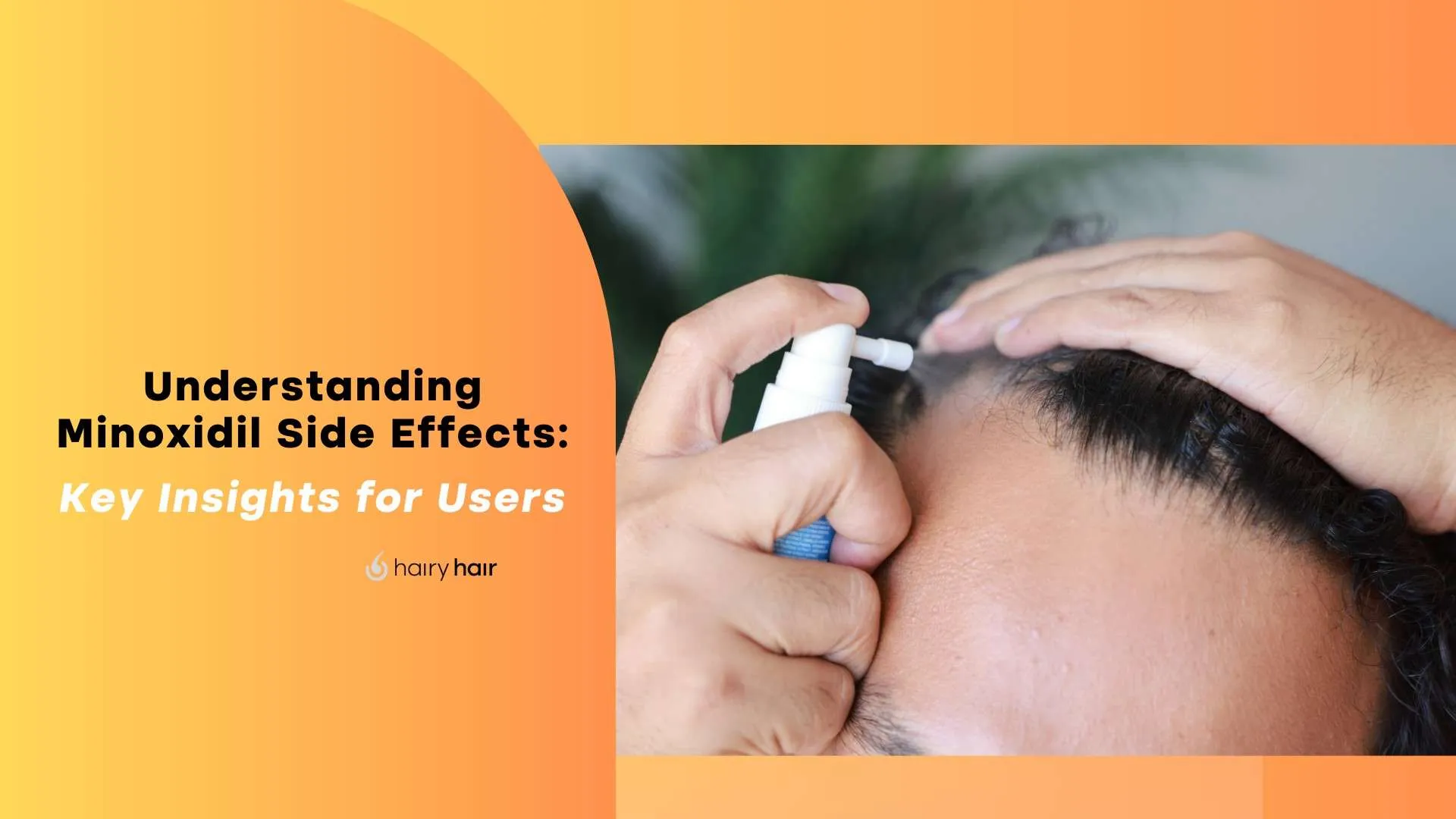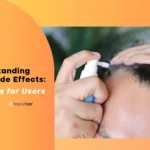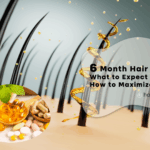Understanding Minoxidil Side Effects: Key Insights for Users

If you’re tackling hair loss, you’ve probably done your research on available treatments. One of the most popular solutions on the market is minoxidil. Here we will look at what this medication is, how it works, and importantly what the side effects are. Side effects can differ depending on if you take minoxidil orally or apply it topically so we’ll outline the differences between them.
Minoxidil is also often combined with other treatments and the side effects can vary when paired with other medications. Finally, we’ll show you how to help you to manage your hair loss problems.
- What is minoxidil?
- Hair growth and minoxidil
- What is the difference between topical and oral minoxidil treatment?
- What are the side effects and risks of taking minoxidil?
- Precautions and contraindications
- Can you combine minoxidil with other hair loss treatments?
- Monitoring and follow-up
- Purchasing and authenticity
- How can Hairy Hair help?
- Final thoughts
- FAQs
What is minoxidil?
Minoxidil is a medication used to help treat hair loss, specifically androgenetic alopecia.
It is available over-the-counter in topical forms such as liquids, foams, and sprays, commonly in 2% and 5% concentrations. Oral minoxidil is also available and can be combined with other treatments in a pill formula.
Minoxidil was originally developed as a treatment for high blood pressure. However, its side effect of promoting hair growth led to its repurposing for hair loss treatment.
Hair growth and minoxidil
Minoxidil stimulates hair growth by increasing blood flow to the hair follicles.
This increased blood flow allows for the hair follicles to receive more oxygen and nutrients which promotes hair growth.
Minoxidil also prolongs the anagen phase of hair growth, leading to longer and thicker hair.
It can be used to support the treatment of both male and female pattern hair loss, as well as other types of hair loss including alopecia areata.
Minoxidil solution is applied directly to the scalp to promote hair growth and slow down hair loss. Oral minoxidil is taken as a daily pill.
What is the difference between topical and oral minoxidil treatment?
Topical minoxidil is applied directly to the scalp and is available over the counter. It is recommended that patients apply minoxidil twice a day to the scalp. Patients may not respond to the topical formulation of minoxidil if they do not have the right enzyme in their hair follicles.
Oral minoxidil treatment is typically used for more severe cases of hair loss and is available by prescription only. Oral minoxidil therapy may be more effective than topical minoxidil for some individuals.
Low-dose oral minoxidil is often used to treat female pattern hair loss and other types of hair loss.
What are the side effects and risks of taking minoxidil?
Common side effects of minoxidil include itching, redness, and dryness of the scalp. These are most frequently experienced in topical applications.
The use of minoxidil may result in increased hair shedding when starting the treatment, which usually settles within six weeks.
More serious side effects can include chest pain, rapid heartbeat, and swelling of the face and hands. Minoxidil side effects are not known to have an impact on sexual function but some of the medications it is often combined with such as finasteride have been known to cause issues in small percentages of patients
Minoxidil can also cause weight gain and changes in blood pressure.
Precautions and contraindications
Minoxidil is not recommended for individuals with a history of heart disease or high blood pressure. When treatment with minoxidil is stopped, hair loss will begin again within a few months.
Patients should not use any other skin products in the same area as minoxidil when applied topically to avoid interaction.
It is also not recommended for pregnant or breastfeeding women. Minoxidil should not be used 24 hours before or after hair treatment procedures.
Minoxidil can interact with other medications, including those used to treat high blood pressure. You should consult with a doctor before starting minoxidil treatment.
Can you combine minoxidil with other hair loss treatments?
Minoxidil can be combined with other treatments for hair loss, such as finasteride, PRP injections and laser therapy.
These treatments target the hair follicles differently. This means that their use in combination is usually more beneficial than when used alone.
Combining minoxidil with other treatments can increase the risk of side effects.
Monitoring and follow-up
Regular monitoring is necessary to track the effectiveness of minoxidil treatment.
Follow-up appointments with a doctor are necessary to adjust the dose and monitor for side effects.
Blood pressure and heart rate should be monitored regularly when taking oral minoxidil.
Purchasing and authenticity
Minoxidil can be purchased over the counter or by prescription.
It is essential to purchase minoxidil from a reputable source to ensure authenticity.
Counterfeit minoxidil products can be ineffective or even harmful.
How can Hairy Hair help?
The Hairy Hair pill contains a blend of proven-effective ingredients known to support hair growth and overall hair health. Our unique formulation is designed to provide a comprehensive treatment that targets different causes of hair loss.
All you need to do is fill out our short online questionnaire so we can get to know you and your hair loss. Our experts will take a look at your information and give you a call to go through any questions you might have. Our unique formula is then sent to a pharmacist before being delivered straight to your door. No clinic visits are required, regain your hair from the comfort of your home.
While side effects are rare, if you experience any issues our qualified Australian GPs can adjust your medication. This allows you to reap all the benefits of our hair growth treatment while minimising any possible adverse reactions.
Final thoughts
Minoxidil is an effective treatment for hair loss, but it can have side effects and risks.
It is essential to carefully weigh the benefits and risks of minoxidil treatment before starting.
Regular monitoring and follow-up appointments with a doctor are necessary to ensure safe and effective treatment.
Contact Hairy Hair today to start your treatment and begin your journey to renewed hair growth and confidence.
FAQs
What is the most common side effect of minoxidil?
Topical minoxidil may cause red skin reactions, itching as well as skin irritation. Patients are rarely diagnosed with headaches or nausea. Minoxidil can cause heartburn and nausea in patients with a high dose, high blood pressure, or high cholesterol.
Is minoxidil safe?
Minoxidil has been FDA-approved for hair loss since 1988. This data is long-term meaning the results show topical or oral minoxidil has a good safety profile in healthy men.
Can minoxidil be used if I’ve dyed my hair?
Minoxidil can be used with hair colouring, but the scalp must be washed before application of the dye.
In This Article
Overview
Most Trending Articles


